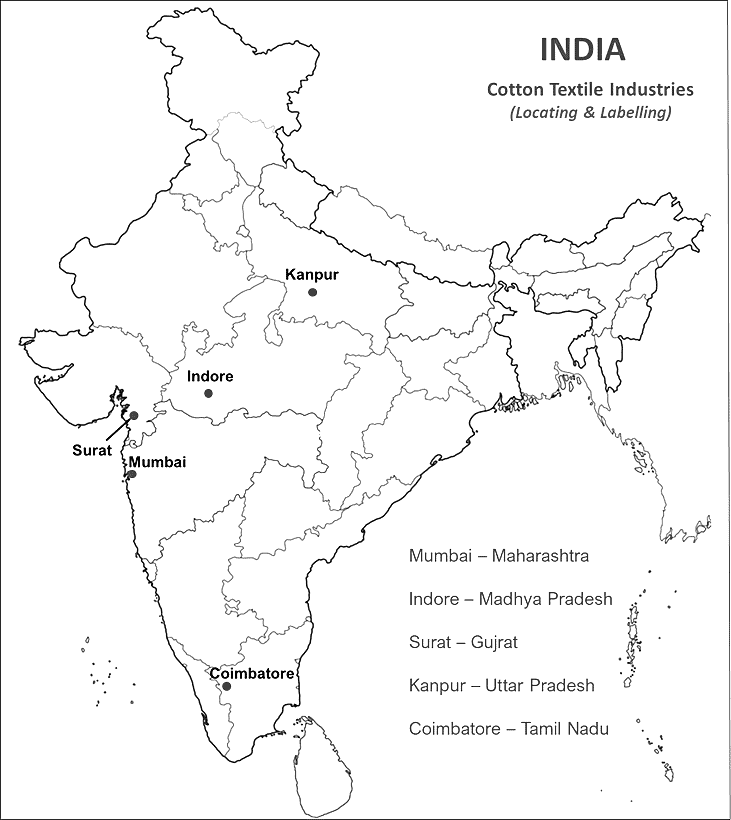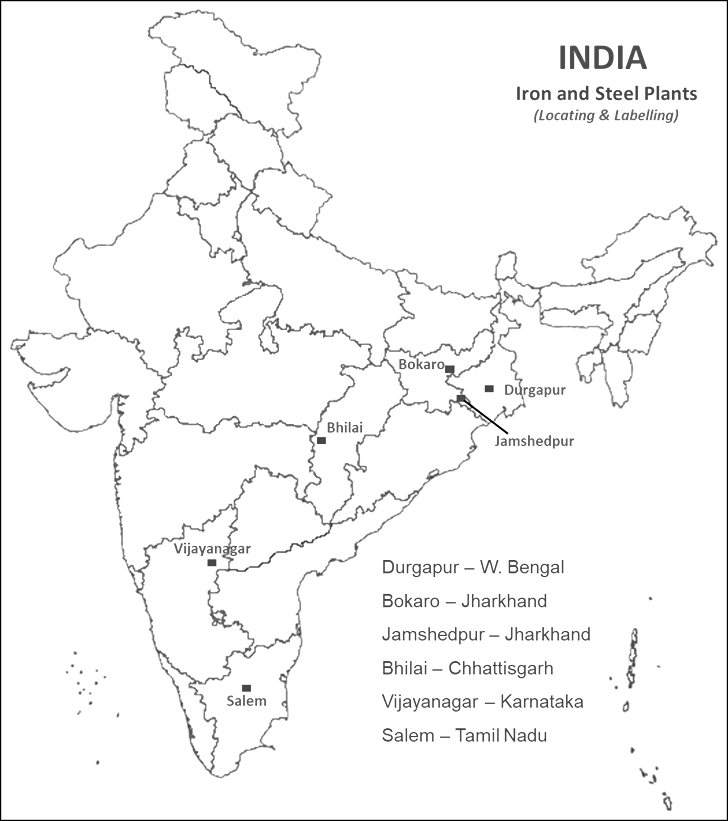Class 10 Exam > Class 10 Notes > Social Studies (SST) Class 10 > Map: Manufacturing Industries
Map: Manufacturing Industries | Social Studies (SST) Class 10 PDF Download
Cotton Textile Industries
- Mumbai
- Indore
- Surat
- Kanpur
- Coimbatore

Iron and Steel Plants
- Durgapur
- Bokaro
- Jamshedpur
- Bhilai
- Vijayanagar
- Salem

Software Technology Parks
- Noida
- Gandhinagar
- Mumbai
- Pune
- Hyderabad
- Bengaluru
- Chennai
- Thiruvananthapuram

The document Map: Manufacturing Industries | Social Studies (SST) Class 10 is a part of the Class 10 Course Social Studies (SST) Class 10.
All you need of Class 10 at this link: Class 10
|
94 videos|630 docs|79 tests
|
FAQs on Map: Manufacturing Industries - Social Studies (SST) Class 10
| 1. What are the main processes involved in the cotton textile industry? |  |
Ans. The main processes involved in the cotton textile industry include spinning, weaving, dyeing, and finishing. Spinning converts raw cotton fibers into yarn, weaving interlaces the yarn to create fabric, dyeing adds color to the fabric, and finishing enhances the texture and appearance of the final product.
| 2. How do iron and steel plants contribute to the economy? |  |
Ans. Iron and steel plants contribute to the economy by providing raw materials for various industries, creating job opportunities, and stimulating related sectors such as construction and manufacturing. They also play a vital role in infrastructure development and overall economic growth.
| 3. What role do Software Technology Parks (STPs) play in the IT sector? |  |
Ans. Software Technology Parks (STPs) promote the growth of the IT sector by providing infrastructure, support services, and fiscal incentives to software companies. They facilitate innovation, research and development, and help in creating a skilled workforce, thus boosting the economy.
| 4. What are the environmental impacts of textile manufacturing? |  |
Ans. The environmental impacts of textile manufacturing include water pollution from dyeing processes, high water consumption, and waste generation. Additionally, the use of chemicals can harm ecosystems and affect human health, making sustainable practices essential in the industry.
| 5. What are the challenges faced by the iron and steel industry? |  |
Ans. The challenges faced by the iron and steel industry include fluctuating raw material prices, environmental regulations, competition from other materials, and the need for modernization to improve efficiency and reduce emissions. Addressing these challenges is crucial for the industry's sustainability.
Related Searches

















